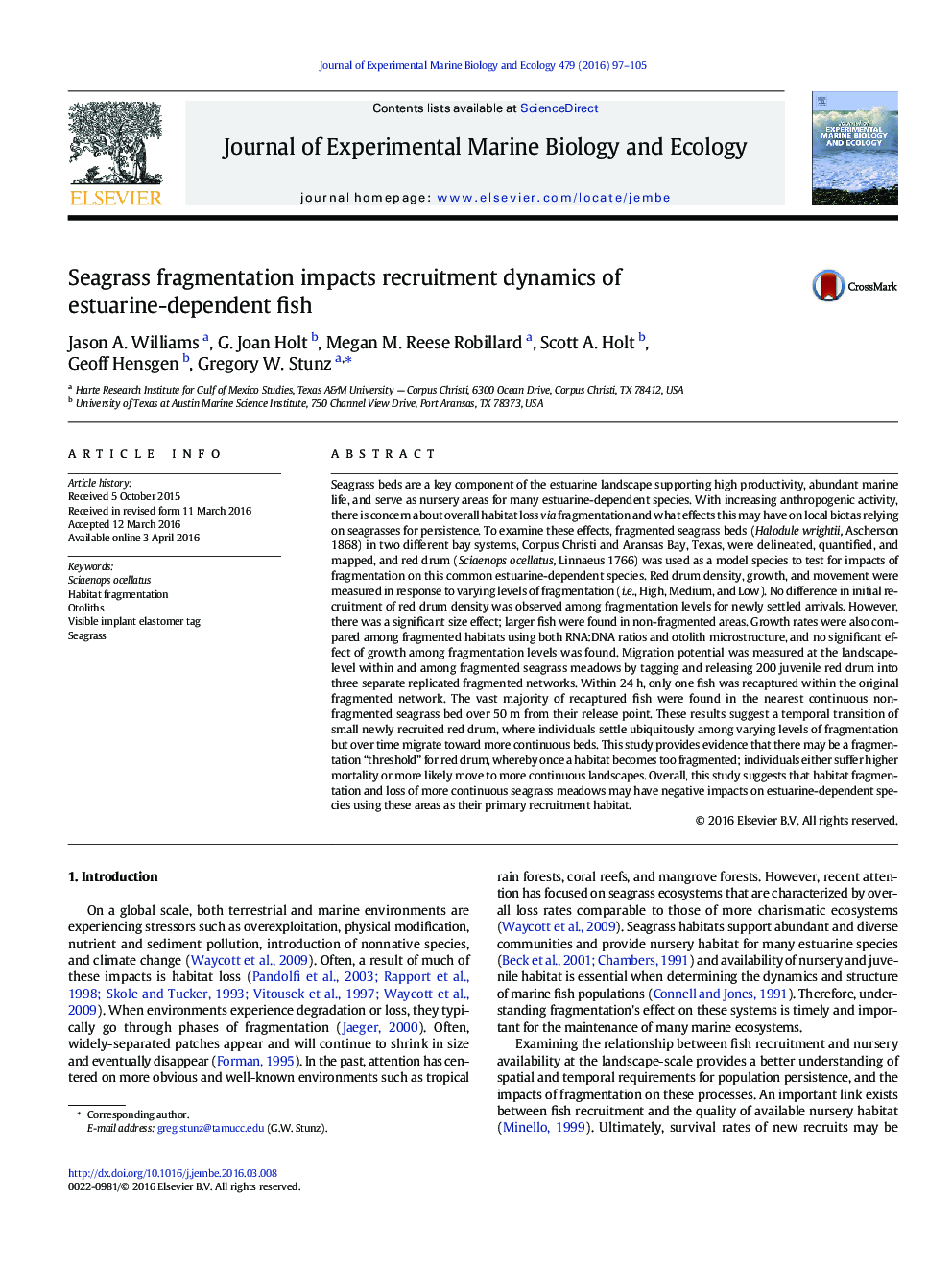| کد مقاله | کد نشریه | سال انتشار | مقاله انگلیسی | نسخه تمام متن |
|---|---|---|---|---|
| 4395268 | 1618396 | 2016 | 9 صفحه PDF | دانلود رایگان |
• Trimble unit used to map 18 seagrass beds representing three fragmentation levels.
• Juvenile red drum densities were similar among three fragmentation levels.
• Larger juvenile red drum were found in more continuous seagrass meadows.
• Juvenile red drum growth rates did not differ between fragmentation levels.
• Tagged juvenile red drum migrated to continuous habitat within 24 h.
Seagrass beds are a key component of the estuarine landscape supporting high productivity, abundant marine life, and serve as nursery areas for many estuarine-dependent species. With increasing anthropogenic activity, there is concern about overall habitat loss via fragmentation and what effects this may have on local biotas relying on seagrasses for persistence. To examine these effects, fragmented seagrass beds (Halodule wrightii, Ascherson 1868) in two different bay systems, Corpus Christi and Aransas Bay, Texas, were delineated, quantified, and mapped, and red drum (Sciaenops ocellatus, Linnaeus 1766) was used as a model species to test for impacts of fragmentation on this common estuarine-dependent species. Red drum density, growth, and movement were measured in response to varying levels of fragmentation (i.e., High, Medium, and Low). No difference in initial recruitment of red drum density was observed among fragmentation levels for newly settled arrivals. However, there was a significant size effect; larger fish were found in non-fragmented areas. Growth rates were also compared among fragmented habitats using both RNA:DNA ratios and otolith microstructure, and no significant effect of growth among fragmentation levels was found. Migration potential was measured at the landscape-level within and among fragmented seagrass meadows by tagging and releasing 200 juvenile red drum into three separate replicated fragmented networks. Within 24 h, only one fish was recaptured within the original fragmented network. The vast majority of recaptured fish were found in the nearest continuous non-fragmented seagrass bed over 50 m from their release point. These results suggest a temporal transition of small newly recruited red drum, where individuals settle ubiquitously among varying levels of fragmentation but over time migrate toward more continuous beds. This study provides evidence that there may be a fragmentation “threshold” for red drum, whereby once a habitat becomes too fragmented; individuals either suffer higher mortality or more likely move to more continuous landscapes. Overall, this study suggests that habitat fragmentation and loss of more continuous seagrass meadows may have negative impacts on estuarine-dependent species using these areas as their primary recruitment habitat.
Journal: Journal of Experimental Marine Biology and Ecology - Volume 479, June 2016, Pages 97–105
